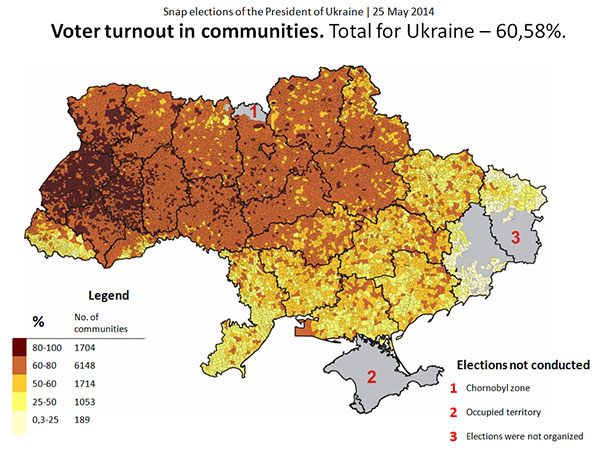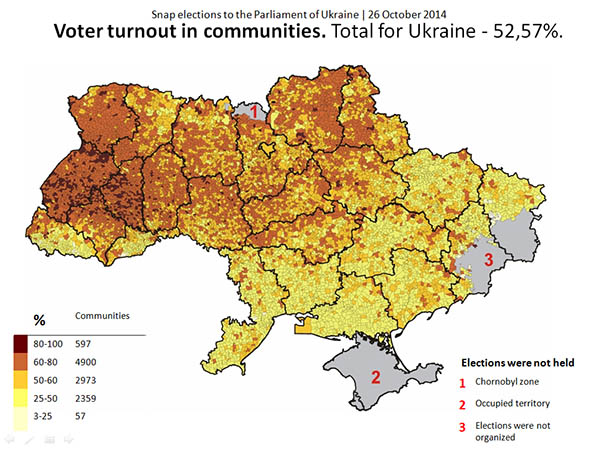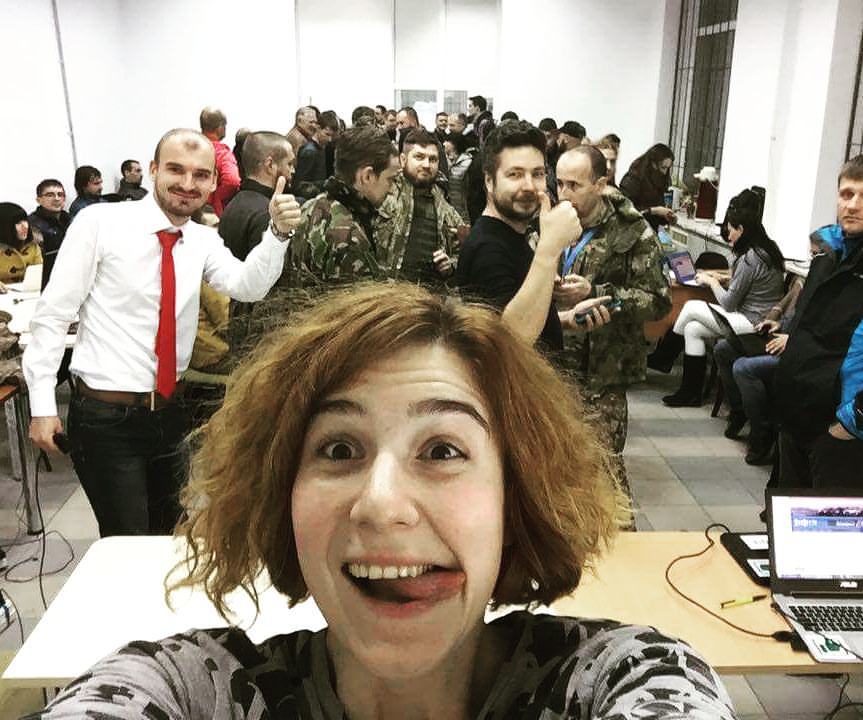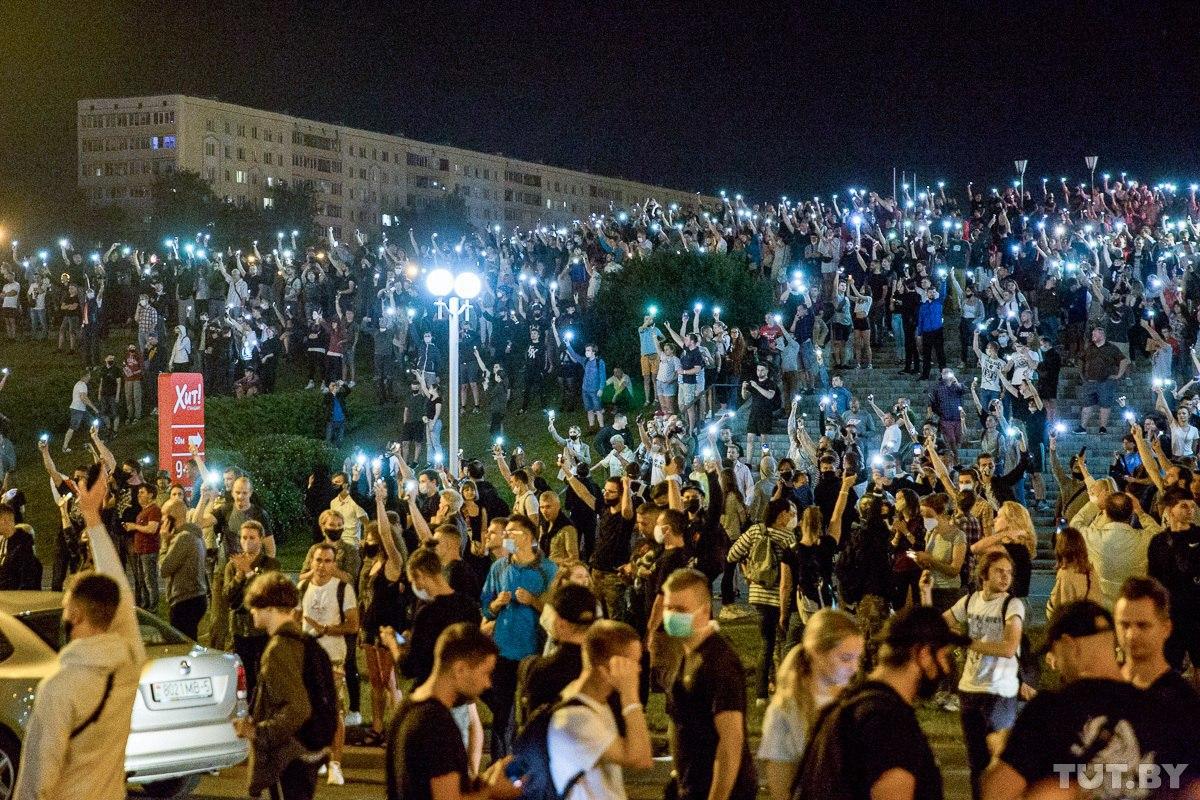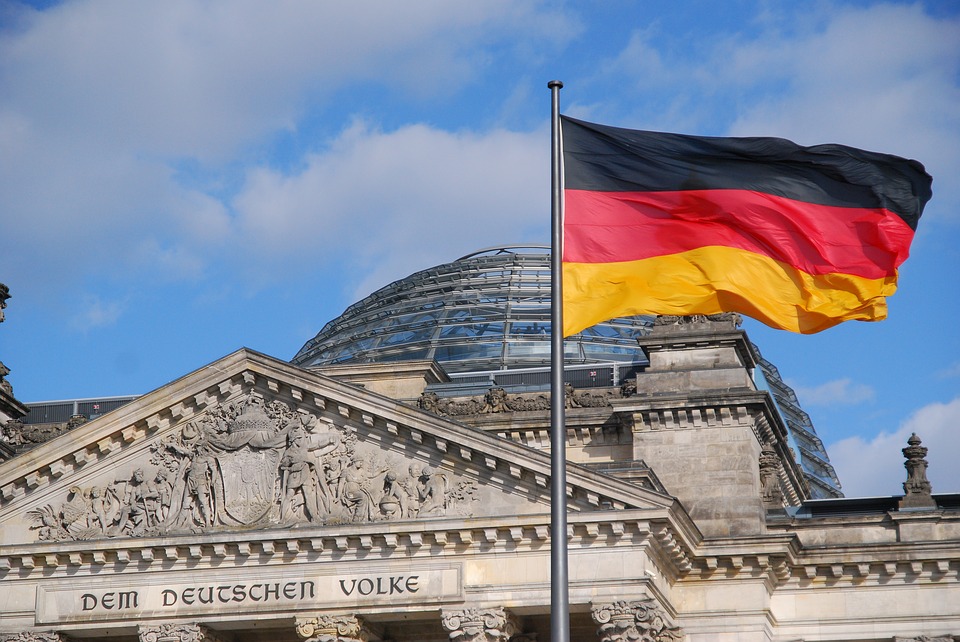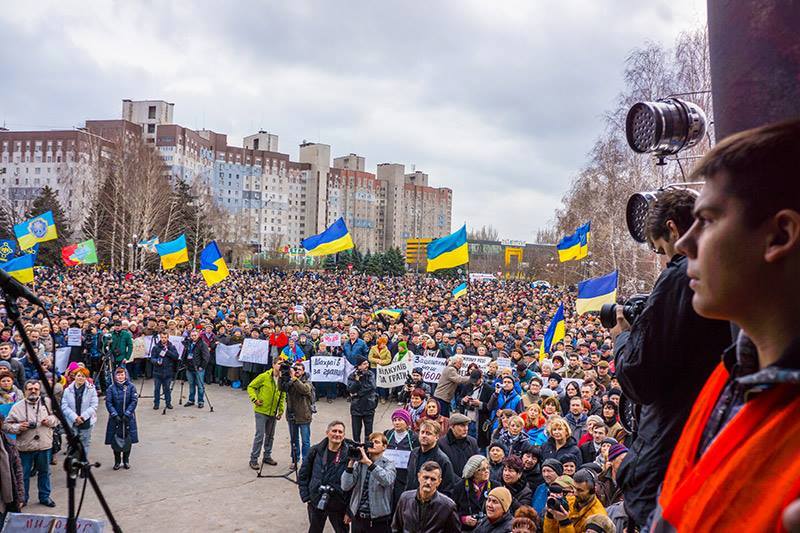Geographical peculiarities of presidential and parliamentary elections of 2014
During the last year, two national elections were held in Ukraine: snap elections of President and Parliament. Now, the local elections across all regions and levels are expected to take place in October 2015. Last local elections took place in October 2010, with Yanukovych and Party of Regions still at power. Russian aggression in Ukraine changed the political landscape significantly. For the first time in 23 years President was elected in one round and communists did not make into the parliament, new political forces and faces are gaining popularity (or at least interest). East-West divide, common for the last 10 years in Ukraine, is blurring. At the same time, support for ex-“Party of Regions” politicians remains widespread in Eastern and Southern parts of Ukraine.
The analysis presented below was based on electoral maps, developed in the Ukrainian Center for Social Data. Maps were created on the basis of data of Central Electoral Committee of Ukraine (CEC – cvk.gov.ua) of snap Presidential elections (25.05.2014) and snap Parliamentary elections (26.10.2014). The basic unit of representation on the maps are “communities” (or “municipalities”) – administrative boundaries of city, town, and village councils. This division provides much more detailed visual information, than analysis by electoral districts, or even “rayons”. Results of “majoritarian” (first-past-the-post) candidates at parliamentary elections of 26.10.2014 are presented by electoral districts (“okrug”).
The main conclusions
Both at presidential elections of 25 May, and at parliamentary elections of 26 October 2014, the highest voter turnout was in Galicia (Lviv, Ivano-Frankivsk, Ternopil oblasts). Concentration of the communities where turnout was higher than 80% - is highest in this region. During the parliamentary elections turnout decreased but the trend remained: Galicians were the most active voters in 2014, while the lowest turnout was in Donetsk and Luhansk oblasts. In general, geography of turnout at both presidential and parliamentary elections shows the limit of the "orange" Ukraine. Residents of the central and western regions voted noticeably more actively.
In general, this pattern of voter activity distribution was natural in the 1990s (the highest turnout in the west, and diminishes in the east and south direction). Increase of voter turnout in Donetsk and Luhansk oblasts coincided with the establishment and vigorous actions of Donetsk political group, represented by Yanukovych. So there were suspicions that the increase in turnout in the eastern regions was not caused by increase of political consciousness of citizens, but was a result of vote rigging – “throwing in” ballots for the right candidate or political party.
Presidential elections, 25 May 2014
During presidential elections Poroshenko got the first place in communities almost all over Ukraine, except for a large part of the Kharkiv Oblast, where Dobkin took the first place in communities. Also Chernihiv Oblast saw increased popularity of Lyashko, especially in communities that were within 208th electoral district, where he was elected to Parliament in 2012. Tymoshenko had significant support in historical region of Polissya - in Chernihiv Oblast, north of Zhytomyr, Rivne and Volyn oblasts – in many communities of those areas she scored first.
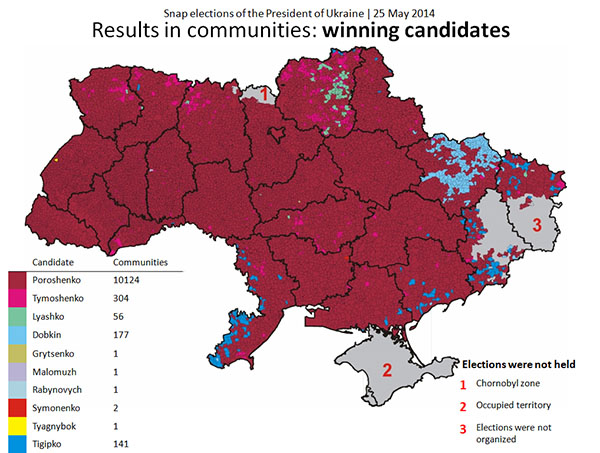
Tigipko won the most votes in a number of communities on the border with Moldova, as well as in a number of communities in Donbas, particularly in the area of Mariupol, and also in the south of Zaporizhzhia Oblast.
Grytsenko, Tyagnybok, Rabinovich, Malomuzh got top votes in only one community each. Symonenko won the most votes, comparing with other candidates, only in two communities.
Second place in most communities of Ukraine was expectedly taken by Tymoshenko (she got second result nationwide, after Poroshenko). Lyashko also had significant support, fairly evenly scattered throughout Ukraine, with notable concentration in the Ivano-Frankivsk oblast (Carpathians), Poltava and Sumy oblasts, Volyn Oblast. Interestingly, Lyashko have not won second place almost anywhere in Vinnytsia Oblast – the main "base" of Poroshenko.
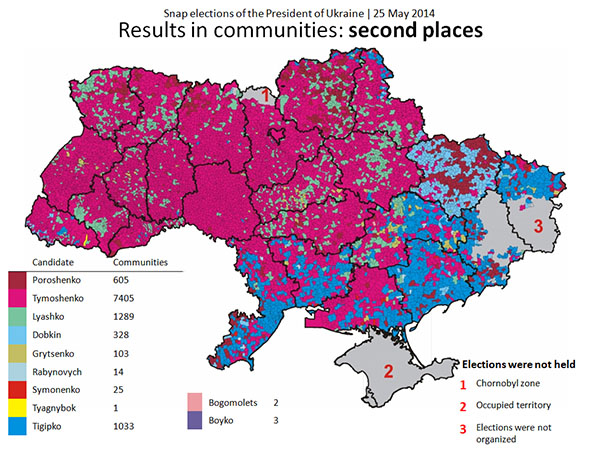
Conventional Ukrainian “southeast” also gave a very strong and uniform support to Tigipko as it previously traditionally supported the "regionals" (Party of Regions) – with exception of most of the "pro-Ukrainian" Kherson Oblast, and the Kharkiv Oblast, where the votes were divided between Poroshenko and Dobkin.
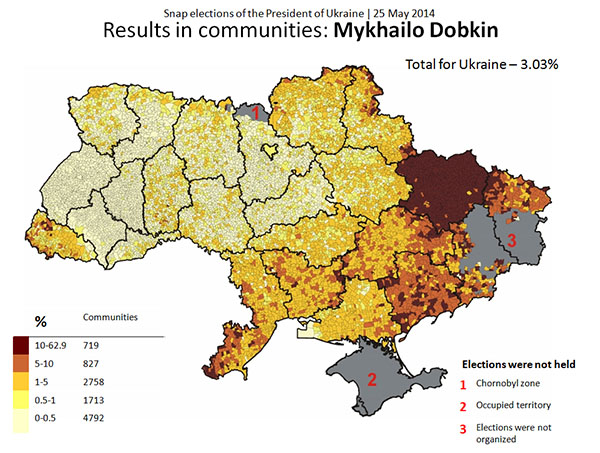
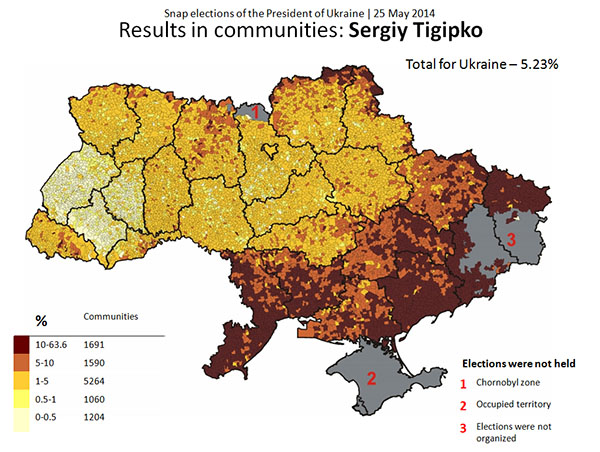
If for most candidates we can see some clear regional divisions of support, and Rabinovich had practically zero support in three oblasts of Galicia, Bohomolets received, although not significant, but relatively uniform support all over Ukraine. Quite characteristic is also the map of support for Dmytro Yarosh, Right Sector leader. Despite the very small percentages he gained, there is clearly visible support for him in Kyiv, and in his native Dnipropetrovsk Oblast.
The rest (ten) presidential candidates in Ukraine received less than 0.5% of the vote each, and were not considered in detail.
Parliamentary elections, 26 October 2014
Comparing with presidential elections, voter turnout has fallen significantly (from 60% to 52%), most active voters were, again, in Galicia.
People’s Front won the support in the vast majority of communities in Ukraine, with main area of support in Western and Central Ukraine (most "monolithic" support demonstrated in Galicia and Volyn), and with some success in Kherson and Mykolaiv Oblast. At the same time there are notable exceptions of Vinnytsia and Chernihiv oblasts.
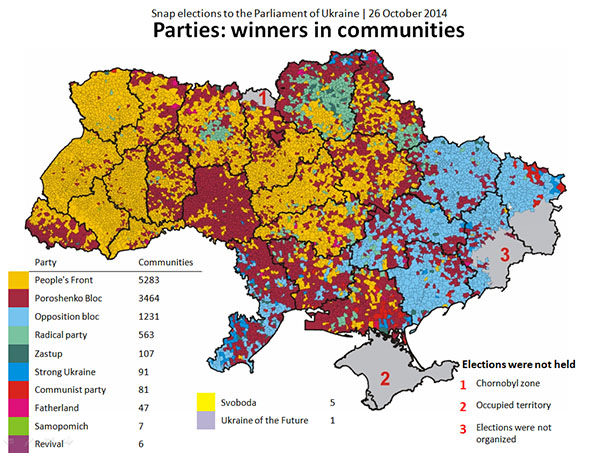
In Vinnytsia Oblast, almost clearly following administrative boundaries of the oblast, the first place was taken by Petro Poroshenko Bloc. First places communities of Chernihiv Oblast were divided among Radical Party of Oleg Lyashko, People’s Front, and Poroshenko Bloc. There was also a notable core of Lyashko’s party support around Zhytomyr, which did not take place in the presidential elections in May 2014. Political palette in Sumy oblast is quite similar to that of Chernihiv oblast.
Map of "second places" in communities of Ukraine is very diverse, there is a diffusion of electoral preferences, which may indicate the search for new "faces", and actual appearance of "new" parties in these elections. It is worth to point out the success of Samopomich in Kyiv, where the party came second.
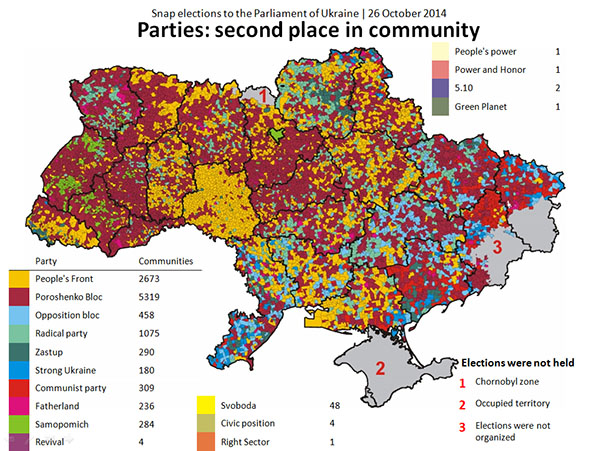
Poroshenko Bloc has received relatively high votes in Vinnytsia Oblast and in Zakarpatska Oblast, along the border with Hungary, predominantly populated by ethnic minorities.
It is very clear how Samopomich got most support in the communities of Lviv and Ivano-Frankivsk oblasts, as well as in big cities of Ukraine and their suburbs. Outside Galicia Samopomich has quite uniform level of supporters.
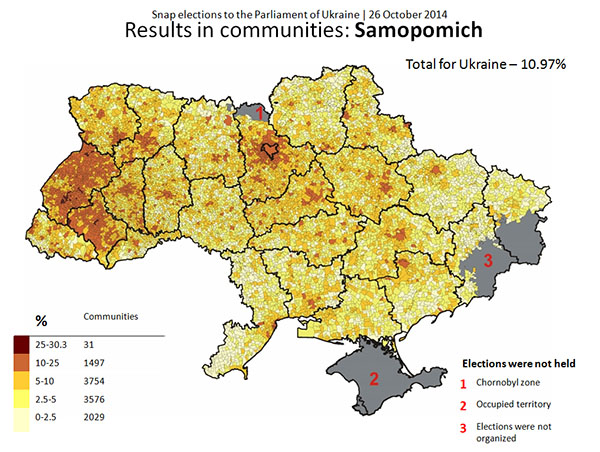
Opposition bloc (OB) won the most support in the traditional "regionalist" territories of "southeast", while in Kherson Oblast OB received significantly fewer votes.
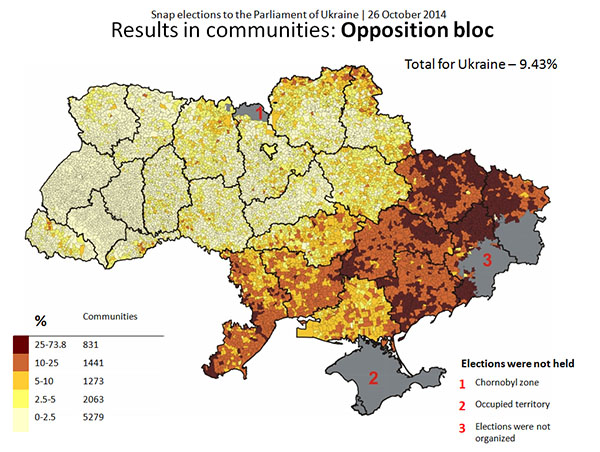
Radical Party of Oleg Lyashko had geography of support, similar to that of its leader Oleg Lyashko at presidential election early in May. Also the main support was concentrated in the area, where there were most voters who did not support any Presidential candidate (voted against all) in 2010.
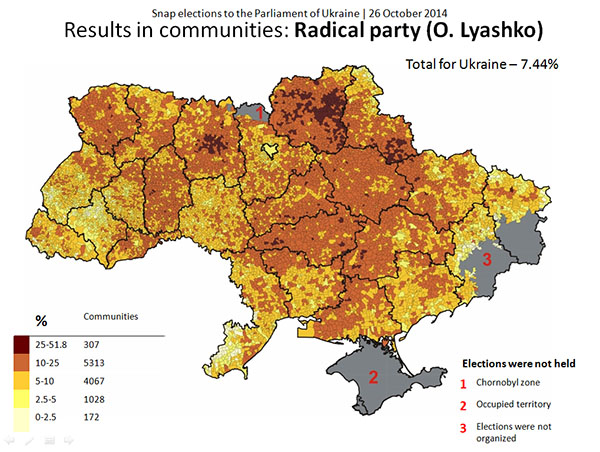
"Fatherland" of Yulia Tymoshenko got the worst result since 2002 (back then she made her debut as "Election bloc of Yulia Tymoshenko"). She made it to parliament this time due to to the relatively uniform support of the "orange zone" (slightly better results were gained in Kirovograd Oblast), except Lviv and Ivano-Frankivsk oblasts, where the decline of her supporters was the highest.
"Svoboda" failed to become a parliament party, being little short of the threshold. At the same time, it received more votes than its leader in presidential elections in May. Traditionally, its support was the highest in western Ukraine.
For the first time since the independence of Ukraine, Communist party of Ukraine is not present in the Verkhovna Rada. Since 2002, the area of its core support was concentrated in the south-eastern oblasts, where it had to compete with Party of Regions. On these elections, it lost a significant portion of voters who live in areas not controlled by Ukraine. Support of communists in their “base” regions fell, but geography of support hardly changed.
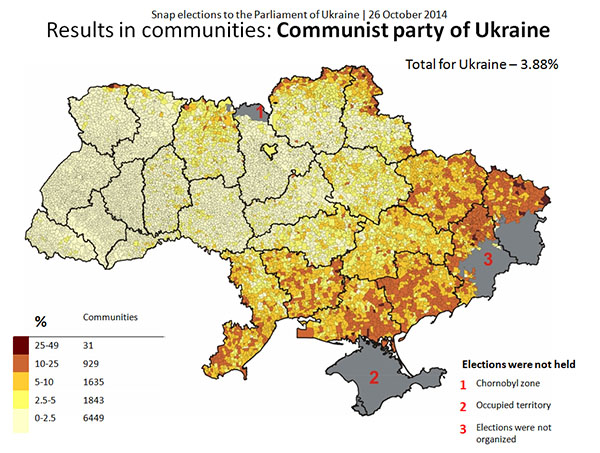
Also votes of southeast were decisive for the result of Sergei Tigipko’s party "Strong Ukraine". However, the party got less than its leader in presidential election in May, and did not make into parliament.
The party “Civil Position (Anatoliy Grytsenko)” got fewer votes than its leader received in presidential election, retaining the same general geographical support.
Party "All-Ukrainian Agrarian Association "ZASTUP" predictably got better results in rural communities, and the best results – in the territory of 208th electoral district (Chernihiv Oblast), where party’s representative was elected by majority vote (first-pass-the-post constituency). By the way, this district is also the base one for Oleg Lyashko and his party. In 2012 he was elected to parliament from this district, but in the last elections, he did not run for parliament in this district, and the new party’s candidate in the district got only third place.
Party "Right Sector" has received more votes than its leader in presidential elections, but the result is quite low. Best performance was in Western Ukraine, Kyiv city and Oblast, and in the Dnipropetrovsk Oblast, in the 39th constituency, in which party’s leader Dmytro Yarosh was elected to parliament.
The remaining 17 parties received less than 1% each, and were not considered for analysis.
In single-member constituencies, representatives of 41 parties competed. Among the parties that passed the 5% electoral threshold, most successful was Poroshenko’s Bloc. Nominees of the party won in 69 districts and came second in 42 districts. Then comes People’s Front – 18 elected, 36 came second. Tymoshenko’s “Fatherland” was on the third place – 2 candidates elected in districts, 14 came second. Оpposition Bloc: 2 candidates elected, 2 came second.
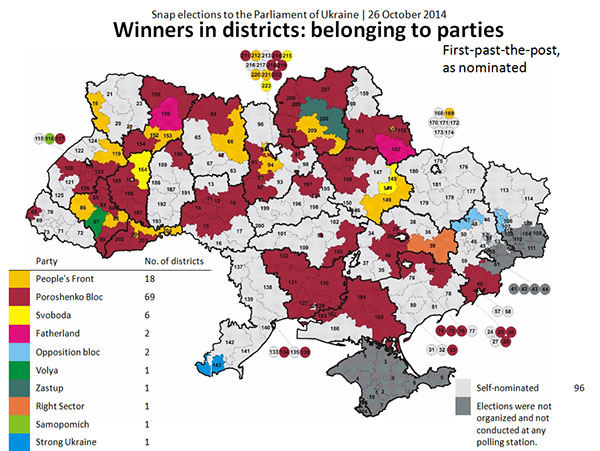
“Samopomich” won in one district, and came second in two districts.
Radical Party of Oleg Lyashko did not win in any district, and only came second in one constituency.
Among the parties that did not pass the electoral threshold by the proportional system, “Svoboda” had the best result in single-member districts: 6 candidates elected, 3 came second. Elected MPs of “Svoboda” did not join any faction or deputy group. MPs elected in the districts from "Right Sector" and "Will" (“Volya”) – each party got one seat – are also unaffiliated with any faction or group. By the way, the multi-county deputies from the party "Will" ran together on one party list with "Samopomich", but after the elections an intra-party conflict took place and leadership of "Will" recognized cooperation with “Samopomich” unsatisfactory.
One seat each got nominees of “ZASTUP” and party of Sergiy Tigipko “Strong Ukraine”. Both MP joined the faction of Petro Poroshenko Bloc.
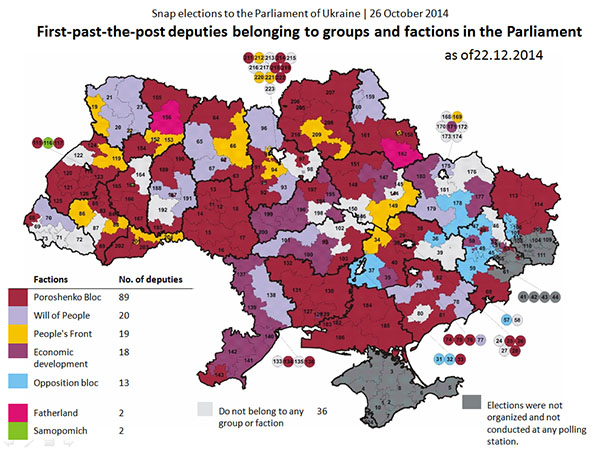
Self-nominees constituted the largest share among the winners in single-member districts – 96. Among them were many of those, who had been a member of a ruling party or were in their faction before the Maidan. After the elections 18 self-nominees joined faction of Poroshenko’s Bloc, 11 – faction of Opposition Bloc, one self-nominee joined People’s Front, and one – “Samopomich”. Two groups of MPs are made up of only self-nominees: “People’s Will” (20 MPs) and “Economic Development” (18 MPs). “Economic Development” group disbanded itself on 5 March 2015, and next day, 6 March, a new group was formed on its basis: “Vidrodzhennya” (“Renaissance”), with 22 MPs.
Currently the elected MPs in Parliament are grouped as follows:
| Faction of the Party “Petro Poroshenko Bloc” | 150 |
| Faction of the Political party “People’s Front” | 82 |
| Faction of the Political party “Opposition Bloc” | 40 |
| Faction of the Political party “Union “Samopomich” | 31 |
| Faction of the Radical party of Oleg Lyashko | 21 |
| Faction of the Political party “All-Ukrainian Union “Fatherland” | 19 |
| Group "People’s Will" | 19 |
| Group "Economic Development" | 22 |
| MP’s not belonging to any faction or group | 39 |


